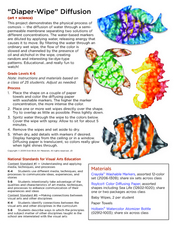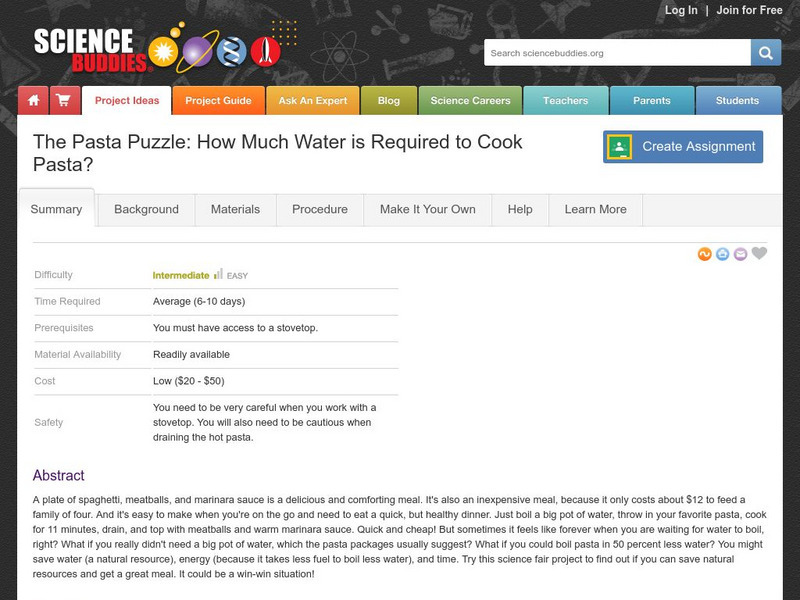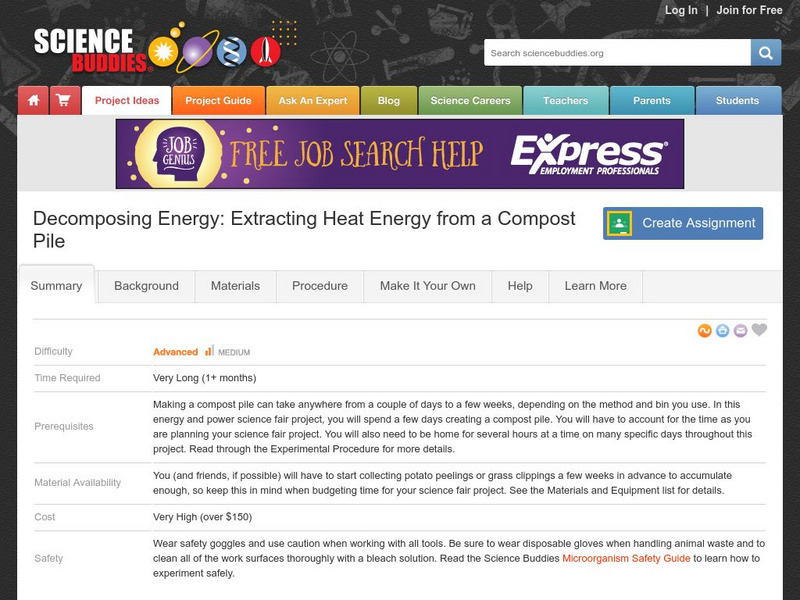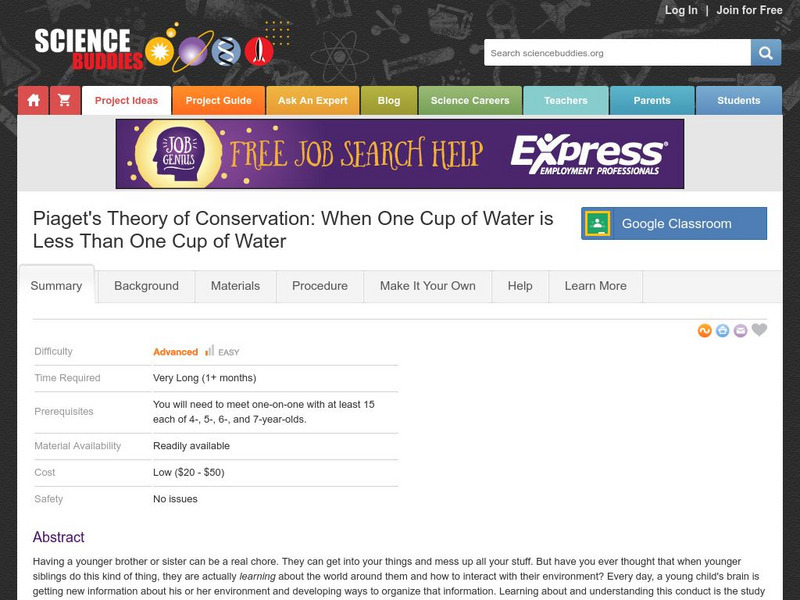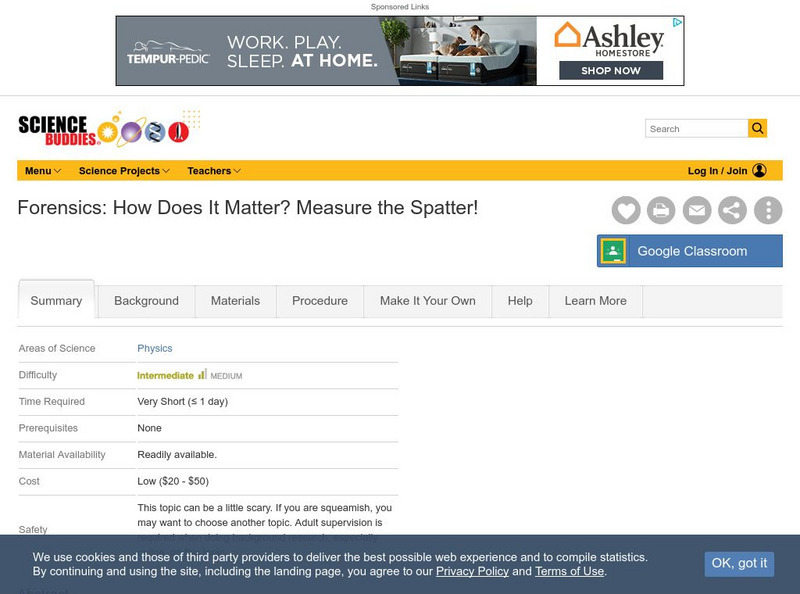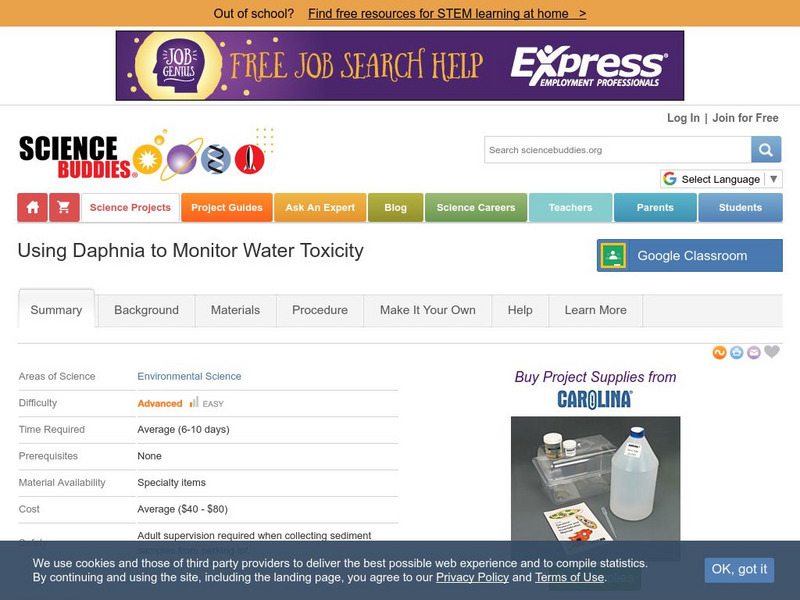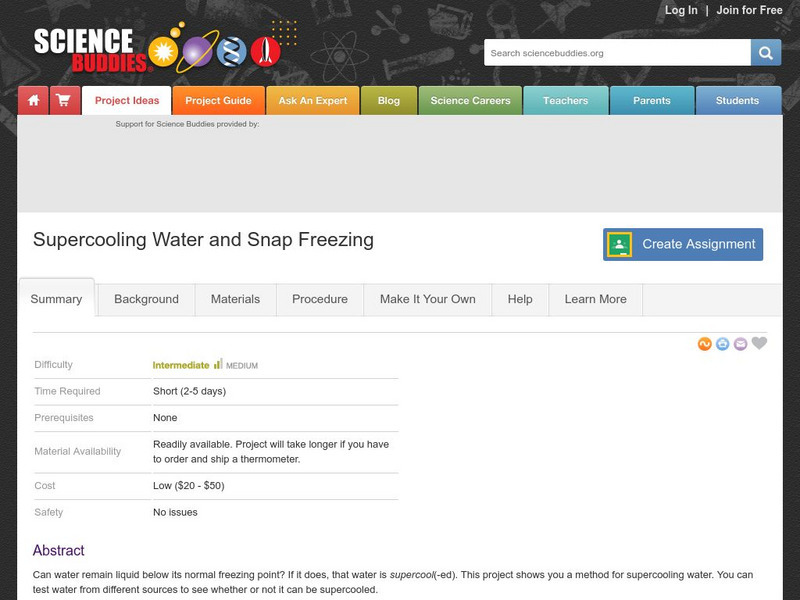Curated OER
Construct with Solids
Students discover which properties of solids lend themselves to building a tower through hands on trial and error and observation of others as they are building. They write down the steps it took them to build the tower and label an...
Curated OER
Microscopes and Telescopes
Students analyze a microscope and study what they do. In this investigative lesson students study how microscopes were first invented, and how ray diagrams are used in conjunction.
Curated OER
Exploring Magnetism
Twelfth graders experiment with magnets in order to visualize that magnets have a north and south pole, some materials can be magnetized, and magnetization occurs because of the magnetic moments of individual molecules in matter.
Curated OER
Diaper-Wipe Diffusion
Explore osmosis through art. Learners use paper towels and markers to create beautiful designs. Although a simple activity, the results are quite remarkable. Your class will love this lesson!
Curated OER
Classification of Cerealites
Students create a dichotomous key. In this categorizing lesson, students create a dichotomous key for different types of cereal. Students classify the cereal into groups such as flakes and cereal with holes. Students discuss their...
Curated OER
TE Activity: Heavy Helicopters
Students study the concepts of weight and drag while making paper helicopters. They measure how adding more weight to the helicopter changes the time for the helicopter to fall to the ground. They apply what they examine to the work of...
Curated OER
Sorting
Students experience sorting. In this organization lesson, students play a computer sorting game called "Flood Game" on the "Between the Lions" website. Students visit a library and observe and discuss book organization. Students work in...
Curated OER
Measuring "pHacts" about Acid Rain
Sixth graders gather and graph information regarding the pH of rain. Working cooperatively with an internet partner, 6th graders gather and record information about the pH of the rain in their local area. They graph this information...
Curated OER
Investigation of Timbre
Students design an experiment to analyze the timbre of different instruments. In this physics lesson, students analyze the missing quality in sound. They discuss their results in class.
Science Buddies
Science Buddies: Project Ideas: How Much Water Is Absorbed by Dried Beans?
In this cooking and food science fair project, measure how the water content of dried beans changes with time. The Science Buddies project ideas are set up consistently beginning with an abstract, objective, and introduction, followed by...
Science Buddies
Science Buddies: Project Ideas: How Much Water Is Required to Cook Pasta?
In this cooking and food science fair project, determine if you really need 6 quarts of water to cook a pound of pasta. The Science Buddies project ideas are set up consistently beginning with an abstract, objective, and introduction,...
Science Buddies
Science Buddies: Project Ideas: Decomposing Energy: Heat Energy From Compost
In this energy and power science fair project, the student will calculate the heat energy produced by an active compost pile, surrounding a tin can filled with water. The Science Buddies project ideas are set up consistently beginning...
Other
California Energy Commission: Science Projects
A number of electrical, nuclear, solar, and wind science projects and energy activities are described on this page, with links to each activity.
Science Struck
Science Struck: Water Cycle Project Ideas
A collection of ideas for creating a science fair project on the water cycle.
Science Buddies
Science Buddies: How Can Your Faucet Save Water?
Experiment with low-flow faucets and see how much water you can save in your home. The Science Buddies project ideas are set up consistently beginning with an abstract, objective, and introduction, followed by a section on terms,...
Science Buddies
Science Buddies: Piaget's Theory: One Cup of Water Is Less Than One Cup of Water
In this human behavior science fair project, the student will learn about Piaget's developmental stages and the Theory of Conservation. The student will investigate the age at which children understand the equality of numbers and mass....
Science Buddies
Science Buddies: The Swimming Secrets of Duck Feet
By comparing the feet of different water birds you can discover how they propel the birds through the water. This Science Buddies project show you how to modify swim fins to simulate ducks' feet, greebes' feet, and the feet of...
Science Buddies
Science Buddies:plop, Plop, Fizz Fast:the Effect of Temperature on Reaction Time
By using Alka-Seltzer and different temperatures of water, you can determine the effect of the water temperature on the chemical reaction of the tablet. The Science Buddies project ideas are set up consistently beginning with an...
Science Buddies
Science Buddies: Moving Water With the Archimedes Screw Pump
Amaze your friends and family by moving water with just a few turns of your wrist, this is known as an Archimedes screw. In this science project, you will build a very simple Archimedes screw, to transfer water from a low-lying location...
Science Buddies
Science Buddies: Forensics: How Does It Matter? Measure the Spatter!
Every criminal leaves behind evidence at the crime scene. The trick to catching the criminal is collecting all of the evidence and making sense of it. This is what the forensic expert does. In this science project you will be correlating...
Science Buddies
Science Buddies: Can Water Float on Water?
Of course it can, you say: ice is water and ice floats. And you're right. But we're talking about water in the liquid phase Can liquid water float on water? The goal of this project is to investigate what happens to layers of water with...
Science Buddies
Science Buddies: Using Daphnia to Monitor Water Toxicity
In a bioassay, a living organism serves as a detector for toxins-the same way canaries were used in coal mines to detect invisible toxic gases. In this project, water fleas (Daphnia magna), a freshwater crustacean, are used in a bioassay...
Science Buddies
Science Buddies: Smart Watering: Adjusting Your Sprinklers for Optimal Soil
Use this science fair project to learn how to test your soil to see if it is getting the right amount of water from the sprinklers. Project is set up beginning with an abstract, objective, and introduction, followed by a section on...
Science Buddies
Science Buddies: Supercooling Water and Snap Freezing
Can water remain liquid below its normal freezing point? If it does, that water is supercool(-ed). This project shows you a method for supercooling water. You can test water from different sources to see whether or not it can be...





